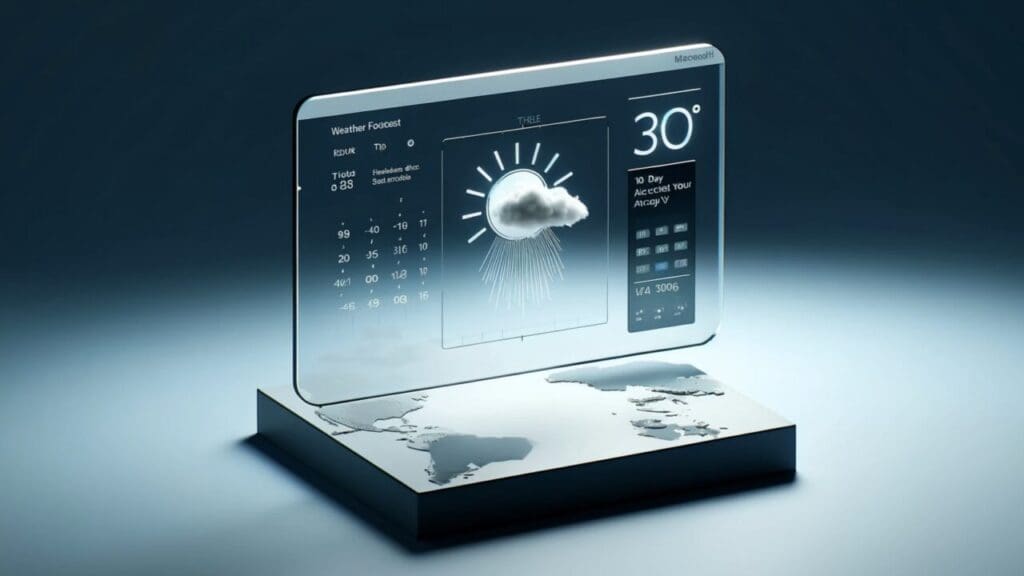Microsoft’s AI-Powered Weather Forecast Models

Microsoft has introduced new AI-powered weather forecast models, investing in artificial intelligence technology to enhance the accuracy of weather forecasts and extend their timeframe. The new models are designed to provide more accurate forecasts for up to 30 days. Here are the details…
30-day accurate forecast: AI-powered weather from Microsoft

Microsoft has taken its reputation as “the world’s most accurate global weather forecast provider” to the next level with its new weather forecast model. Introduced in a study published on arXiv, managed by Cornell University, this model outperforms the current model used by the European Centre for Medium-Range Weather Forecasts (ECMWF).
The new weather forecasting system from Microsoft utilizes five different AI models and three deep learning architectures. These models analyze decades of weather data to identify recurring patterns, which are then used to predict future weather trends.
While similar to traditional numerical weather forecast models, Microsoft’s AI models leverage graphics processing units (GPUs) to make predictions faster and more frequently, thereby enhancing the accuracy of the forecasts.
How does the new system work?

Microsoft’s new system predicts the state of the atmosphere one hour from now across a three-dimensional sphere (latitude, longitude, and altitude). Each prediction is then fed back into the model, allowing for successive forecasts spanning several hours. This cycle is crucial for understanding how a weather forecast model operates.
One significant advantage of AI models, thanks to GPUs, is their ability to make predictions faster. This capability enables more frequent updates and enhances the accuracy of the results. Microsoft reports that the new model is particularly more precise in predicting temperatures. According to the company’s data, the model achieves 17 percent more accurate results for one-week temperature forecasts and 4 percent greater accuracy for four-week temperature forecasts.
Microsoft plans to integrate this new model into Microsoft Start soon, providing users with more reliable weather forecasts. In the future, we may see AI models capable of making even more accurate and longer-term weather predictions. What are your thoughts on this development? Feel free to share your opinions in the comments section below.
You may also like this content
- AI Tools Are Coming to Opera Android: Here Are the Innovations
- Amazon Introduces Highly Ambitious Next-Generation AI Chip Trainium3
- OpenAI Is Losing the AI Race: “Emergency” Declared for ChatGPT
Follow us on TWITTER (X) and be instantly informed about the latest developments…











